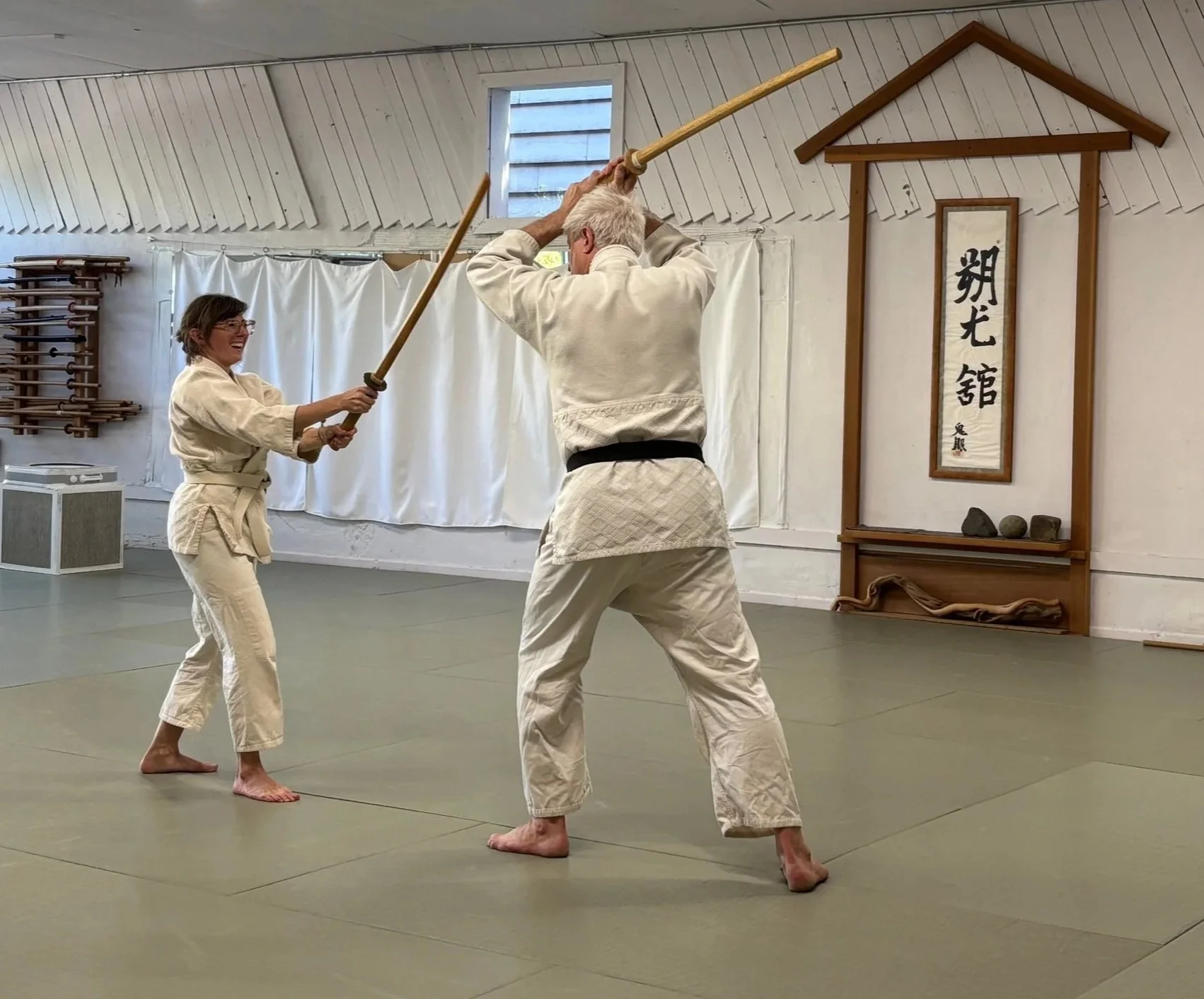Scaffolding is a term used in education to refer to a teaching strategy where a complex skill or topic is broken down into smaller parts, allowing students to gradually absorb concepts in more manageable chunks until the topic is mastered. I was a teacher for about five years earlier in my career, and I find myself encountering similar strategies in my aikido training.
Aikido can be a challenging martial art to learn as a beginner, as it involves a complex interaction of body positioning, mental awareness and focus, and spirit (or perhaps, projection of intent). I have been training in aikido for a few years now, and I’ve begun to recognize how effective scaffolding can be as a technique to break down a complex series of interactions in aikido into smaller, more manageable steps. Even the most beginner level techniques present a series of hand motions, foot and body positioning, and an almost contradictory blend of mental concentration and calmness. All these aspects are maintained through a series of movements to achieve the end result, and it’s amazing how a small adjustment to any of these aspects produce highly effective results for you and your training partner. However, it does take some patience, and it can feel overwhelming to try to remember everything at once. I would encourage all students, whatever your level, to think about scaffolding.
It takes a lifetime to master aikido, which is something I personally love about the art. But along the way, start with smaller, more bite-sized pieces. Scaffolding will look different for everyone, as we all have our preferences, our strengths and weaknesses when it comes to how we understand our minds and bodies, so we naturally choose to focus on certain things more than others. Great instructors will use scaffolding intuitively to break down aikido into smaller chunks during practice. You might not even realize how much you are improving because as you continue to train, your instructors can see your progress and gradually push you towards new challenges to overcome. However, I also encourage everyone to apply their own internal scaffolding during practice, to help you gain confidence in learning a new concept, no matter your level!
Xenia Wirth practices kiriotoshi “stop action” with Nathan Young
How can you apply scaffolding day-to-day? During a training session, choose an aspect of the technique you’re working through to focus on, especially if trying to improve multiple aspects at once seems unattainable at that moment. As an example, here are some things I’ve said to myself as I work through a training session:
I think my hand positioning is wrong for this technique, but I’m working on focusing my center and projecting my intent through my technique, to keep my partner off-balance. I’ll incorporate the hand positioning a bit later.
I have a tendency to swing my foot position too wide for this technique, but I can see how stepping closer to my partner and tilting their head back is really effective for the throw. Let’s get that down, and then I’ll come back to the foot positioning.
I’m really tense and stressed from work today. Let’s remember to relax the upper body and shoulders and soften the gaze. I may not have as much brainpower to grasp this part of the technique today, but if I can relax a bit more, I can feel more of a connection with what my partner’s body is doing, which is going to help me take ukemi.
Or maybe even…
Wow, this technique is really awesome, but I’m just not really getting it. That’s ok! Let’s just have a bit of fun with the basic hand and body movements today, and enjoy the experience. I’m sure it will make more sense as I train more!
I think sometimes we forget to smile. It’s hard not to worry about doing something perfectly, but don’t let that keep you from enjoying the experience. Remember to always have a little fun!
Xenia Wirth is a member of Multnomah Aikikai

